A day ahead of the 160th death anniversary of Lady Canning, West Bengal Heritage Commission (WBHC) members including Biswajit Matilal, Umapada Chatterjee and Basudeb Malik visited the site at the old governor-general’s residence on the banks of the Hooghly to commemorate World Heritage Week. The original marble monument, which began to deteriorate under extreme weather conditions, was shifted long ago to Kolkata’s St John’s Church. In Barrackpore now stands a replica with the inscription: ‘I will ransom them from the power of the grave/I will redeem them from death’. At a distance is a towering sculpture of Lord Canning.
While installing a plaque in the presence of author Amit Chaudhuri, entrepreneur Harsh Neotia and members of Purono Kolkatar Golpo on Sunday, WBHC chairperson Shuvaprasanna said, “Standing in front of the Minto fountain, the honeymoon lodge or the arterial roots of the grand banyan tree takes us back in time.” In his company were French consul general Didier Talpain, Japanese consulate general Nakamura Yutaka, British Deputy High Commission’s deputy head of mission Yemi Odanye, project head of Serampore Danish Initiative Bente Wolff and Bangladesh’s deputy high commissioner Toufique Hasan.
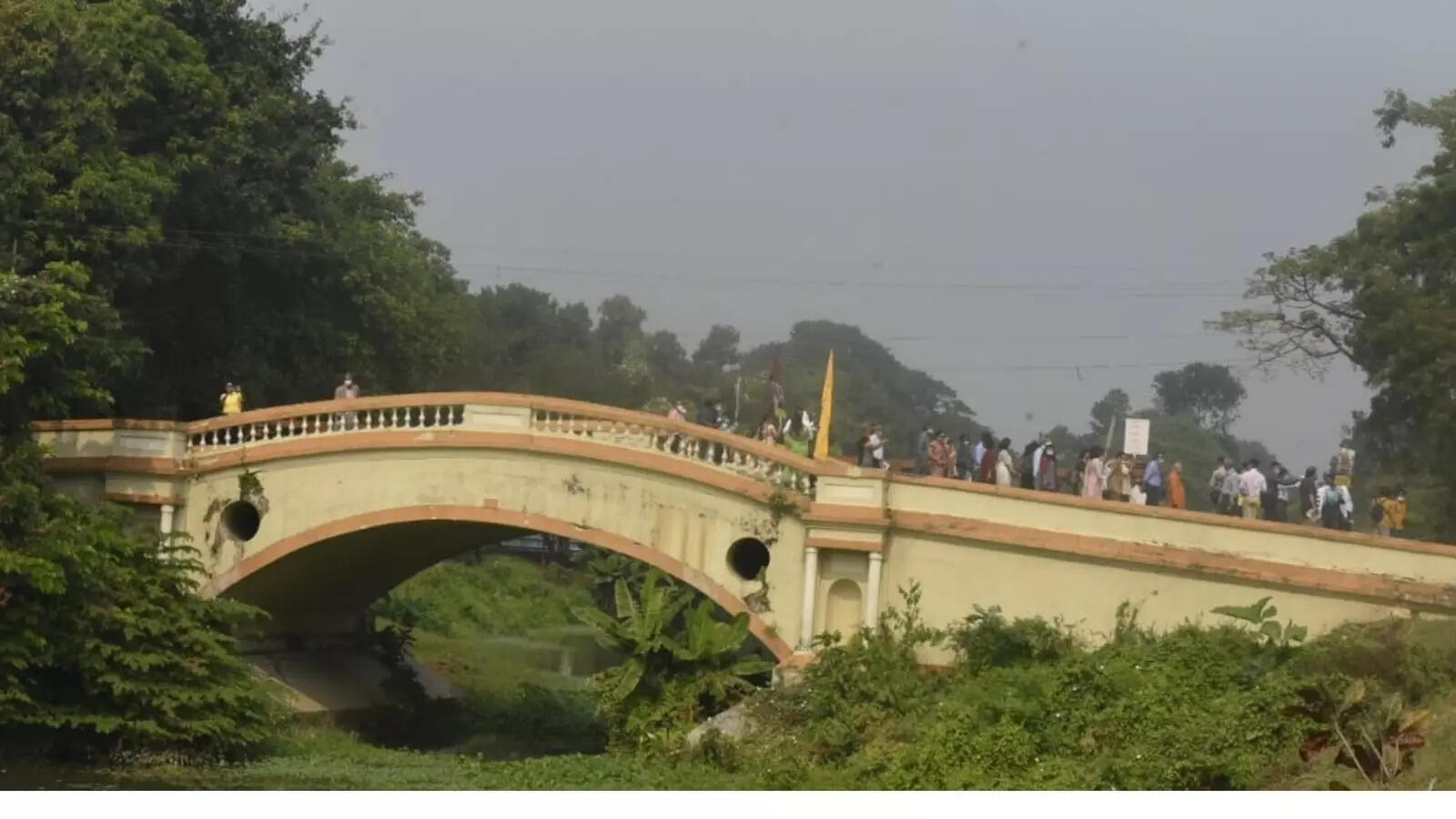
Heritage enthusiasts take a walk of the campus that has landscaped gardens, park land and an English-styled bridge over a stream
The inscription of the plaque mentions that the construction of this house had begun in 1801 during the period of Lord Wellesley. Designed by Captain Thomas Anbury, it was built as a weekend retreat of the governor generals and viceroys. The structure has elements of Renaissance architecture and is surrounded by landscaped gardens, park land and an English-styled bridge over a stream. In 1947, it came under the purview of the Police Training College, renamed as Swami Vivekananda State Police Academy. It was partially converted into a police hospital. The WBHC declared it a heritage site in 2013.
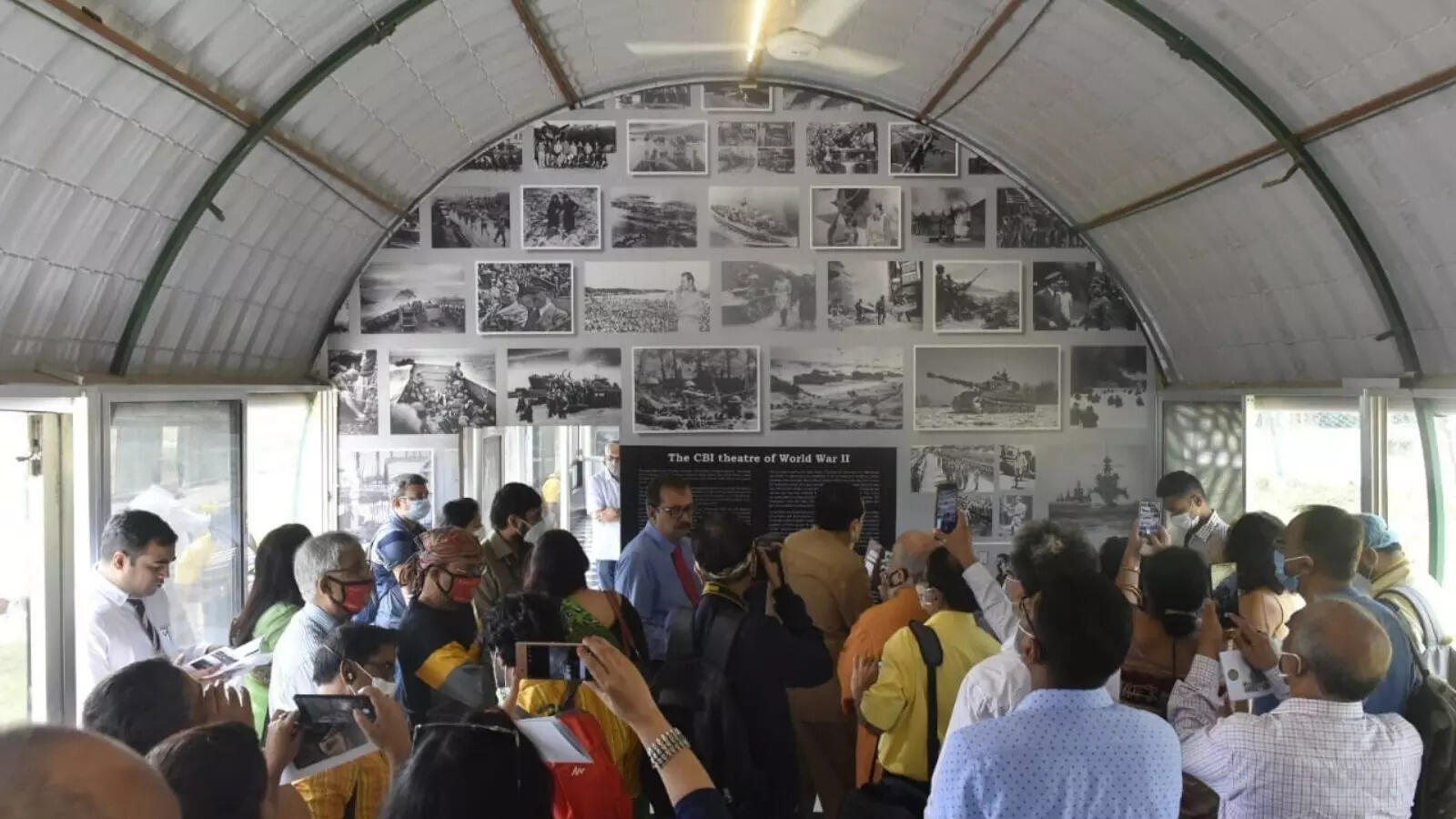
Visitors at the CBI theatre of World War II
The view of the Ganga on the horizon, the Alpana road inside the Swami Vivekananda State Police Academy with designs painted by the cops, the imposing structure of the old governor general’s house, the steps leading up to the first floor, the light filtering into the verandah through the blinds and the chandeliers hanging from the ceiling – most of the visitors felt that almost everything complemented each other to create a lasting impact.
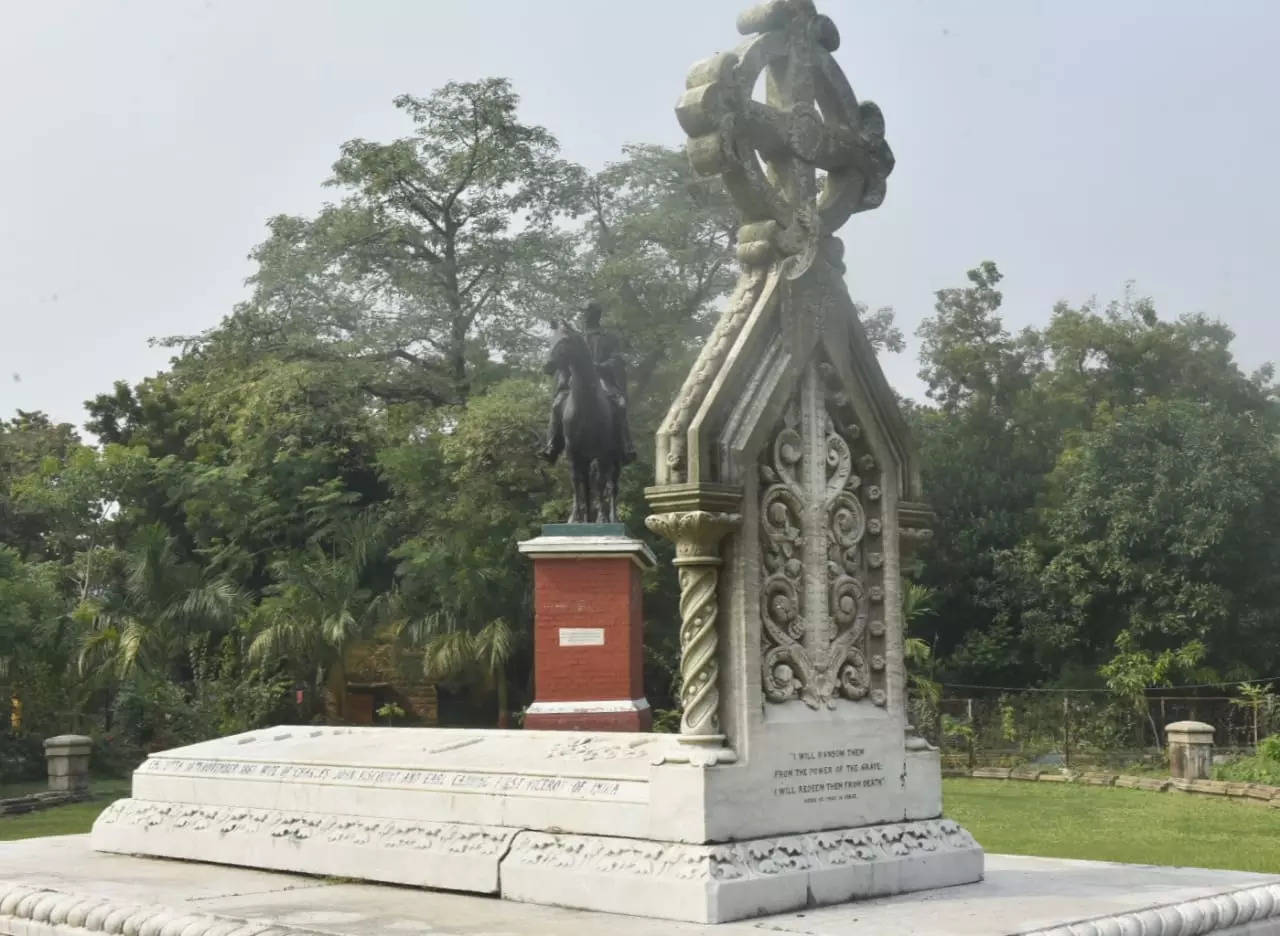
Lady Canning’s grave. In the background is the sculpture of Lord Canning
Actor-turned-MLA June Maliah was intrigued to see a photo of Netaji meeting Hitler at CBI theatre of World War II. “I always knew about the historical importance of Barrackpore because of the Sepoy Mutiny but it had never occurred to me that such an oasis existed in its heart. I had never seen this photograph of Netaji before. The entire museum was very interesting. With my love for animals, I also enjoyed the dog squad show.”

A plaque was installed on Sunday
A colony of houses, author Amit Chaudhuri pointed out, needs to be preserved. “I’m glad that WBHC is conserving and not being hostile to a colonial legacy. There need to be careful rules and people assigned the job of restoration need to be careful about additions and changes because the originals have extraordinary features which can’t be replaced. The interior is as seductive, if not more, than actually the exterior,” he said.
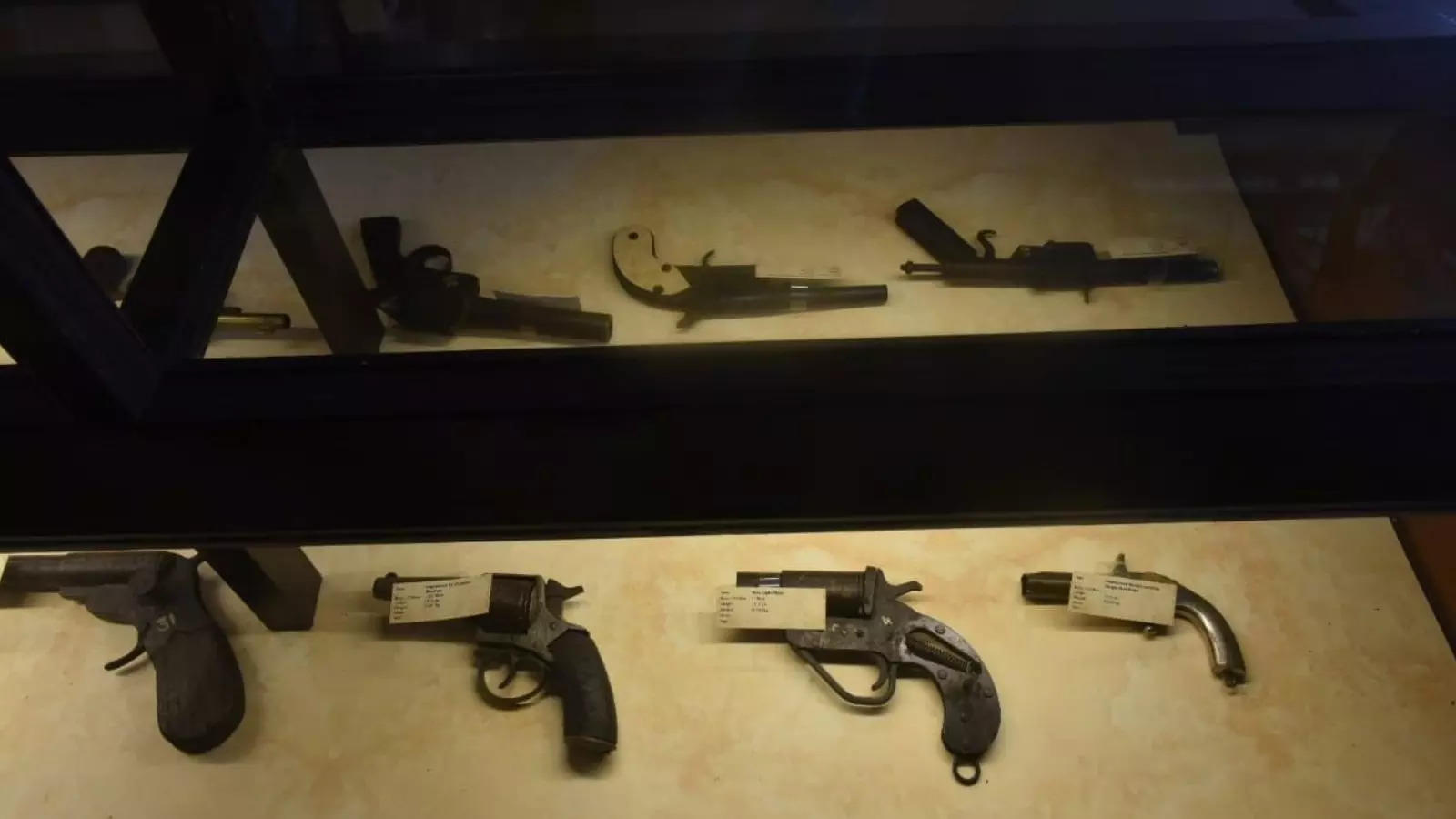
The collection of arms on display at the museum
A museum in the building’s basement has a collection of arms, including a boat cannon, the Smith Wesson revolver, the Webley Scott revolver, a single-barrel gun and a double-barrel gun. These weapons were kept unattended in a store at the Swami Vivekananda State Police Academy. They were seized by the British Police during the first half of the 20th century from revolutionaries of Bengal and sent to the academy for safe custody post-independence. Unfortunately, documents are not available as yet regarding the history of their seizures. Describing the display as “interesting”, heritage architect Partha Ranjan Das said, “It has some improvised single shot guns, too. However, it’s best to keep the walls and flooring of a restored heritage building as close to the original as possible.”
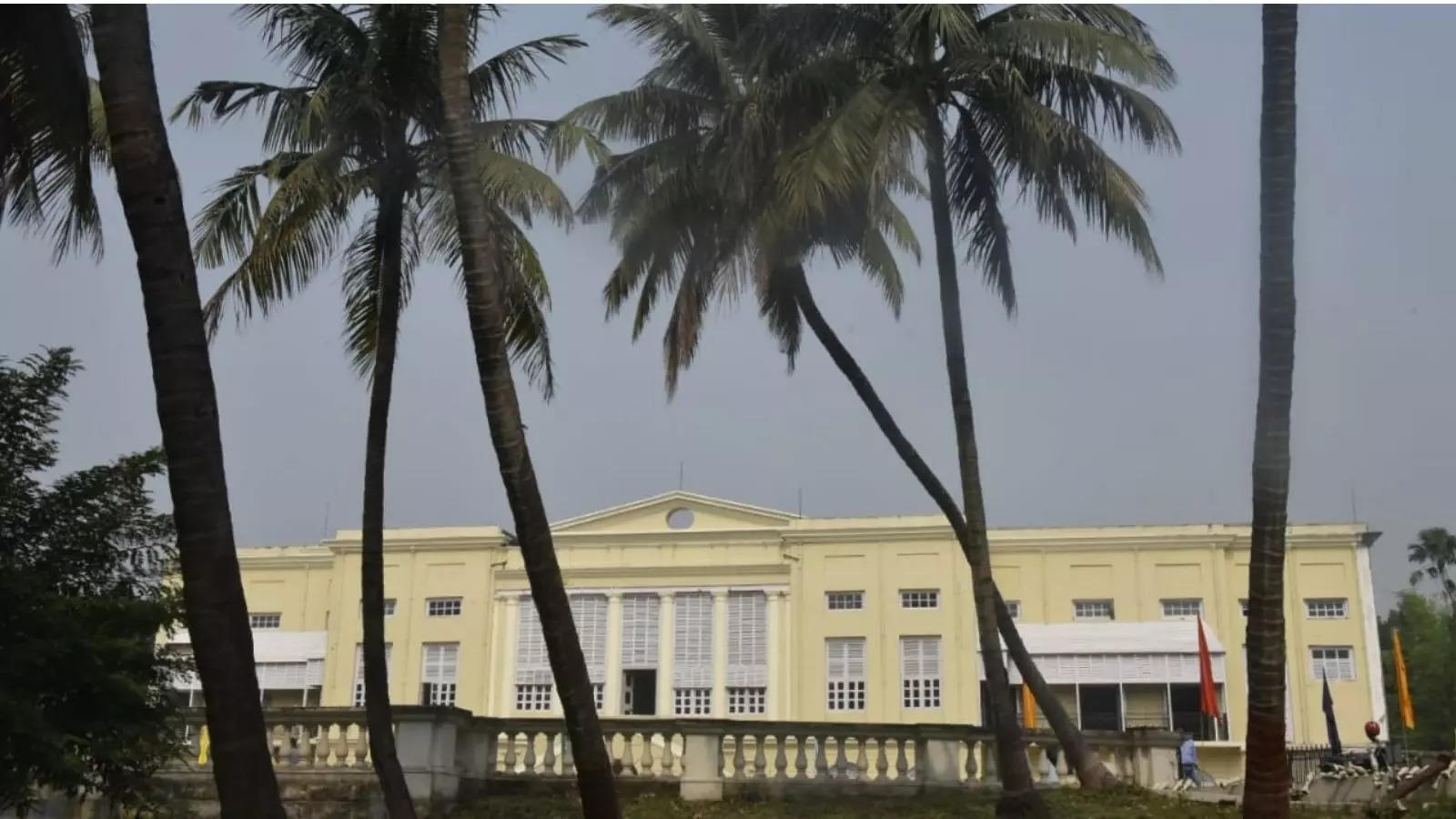
The construction of this house had begun in 1801 during the period of Lord Wellesley
Art connoisseur Nandita Pal Chaudhuri praised the efforts of Kolkata CP Soumen Mitra, who was then the ADG of police (training) and in charge of Lat Bagan Police Training School and played a major role in the restoration. “This trip showed me how one man’s initiative can have such a largescale impact on safeguarding our heritage. I wish there were more such people,” she said. Heritage enthusiast Sandip Nowlakha added, “This work has given inspiration to come up with the idea of the inaugural Barrackpore Heritage Festival on January 30.”
Source: https://timesofindia.indiatimes.com/city/kolkata/a-peek-into-history-at-old-governor-generals-house/articleshow/87836810.cms



